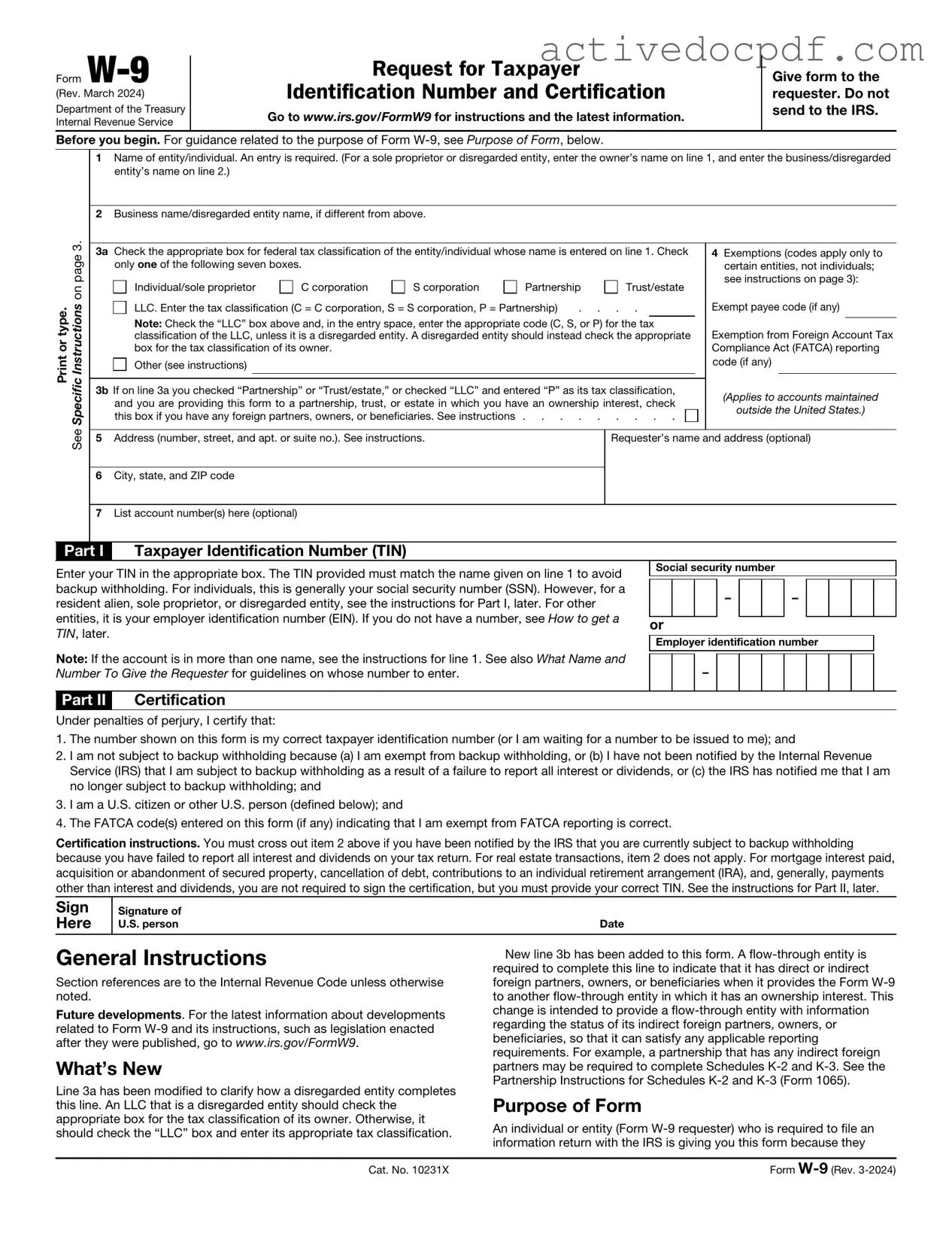The IRS W-9 form is a document used in the United States by individuals and businesses to provide their taxpayer identification information. This form is often requested by companies when they need to report payments made to contractors or freelancers. It helps ensure that the correct tax information is reported to the IRS.
Any individual or business that receives income that must be reported to the IRS may need to fill out a W-9 form. This includes freelancers, independent contractors, and certain vendors. If you’re providing services and getting paid, the requesting party may ask you to complete a W-9.
When filling out a W-9 form, you’ll need to provide:
-
Your name or business name
-
Your business entity type (individual, corporation, partnership, etc.)
-
Your address
-
Your Social Security Number (SSN) or Employer Identification Number (EIN)
-
Signature and date
Submitting a W-9 form helps the entity requesting it to accurately report the payments they make to you to the IRS. This ensures that you and the payer are compliant with tax laws. If you don’t provide a W-9, they may withhold taxes from your payments.
No, the W-9 form and the 1099 form are different. The W-9 is used to provide your taxpayer information, while the 1099 form is issued by the payer to report the income you earned. The payer uses the information from your W-9 to complete the 1099 form accurately.
You typically submit the W-9 form directly to the person or business that requested it. This can be done via email or regular mail, depending on their preference. Keep in mind that you should not send the W-9 form to the IRS.
If your name, address, or taxpayer identification number changes, you should fill out a new W-9 form and submit it to the requesting party. It’s important to keep your information up to date to avoid issues with tax reporting.
What happens if I don’t submit a W-9?
If you don’t submit a W-9 form when requested, the payer may withhold a portion of your payments for tax purposes. This is known as backup withholding. The withheld amount is sent to the IRS, and you may still be responsible for reporting the full amount of your income.
